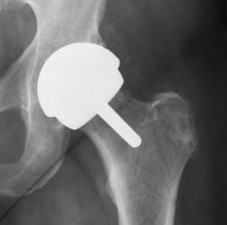Stryker Rejuvenate Hip Lawsuit Filed in Minnesota District Court
In yet another addition to the Stryker hip multi-district litigation (MDL), a Washington resident has asserted his metal-on-metal hip implant caused severe injury, resulting in economic loss and personal injury. The complaint, which was filed on March 18, 2015, is one of thousands alleging a defective design by Stryker Orthopaedics, which eventually pulled the product from the market in a July, 2012 voluntary recall.
The Stryker hip lawsuit maintains the allegations set forth by others engaged in the MDL, primarily asserting the presence of severe metallosis and tissue damage due to the design of the product.
Total hip replacement system causes patient difficulty
Problems with the Stryker Rejuvenate hip device range from mild discomfort to the need for a complete replacement. According to this recent filing, the plaintiff was implanted with the device to correct wear and tear in his right hip on September 9, 2011. The implant was thereafter explanted on March 11, 2015 following debilitating side effects and problems with the device.
Allegedly, the plaintiff was unaware of the voluntary recall of the Rejuvenate hip replacement system, which occurred just one year after he was implanted with the product. Following routine bloodwork, the plaintiff discovered the presence of elevated metal levels in his blood, particularly the presence of chromium and cobalt – components of the Rejuvenate product.
Elevated metal levels in the bloodstream can lead to any of the following:
- Severe pain
- Sense of instability
- “Popping” sounds, or increasing noise from the hip joint
- Fracture
- Tendinitis
- Damage to surrounding tissue
- Loosening of the implant
According to medical experts, the only way to treat the onset of metallosis is to conduct a surgical revision or removal of the metal hip system, which – as is the case with the plaintiff – creates severe pain, discomfort, and economic loss.
The plaintiff’s allegations
Like other participants in the Stryker Rejuvenate MDL, the plaintiff has alleged a series of causes of action against the manufacturer, primarily with regard to its alleged failure to warn implant patients of the known risks of metal-on-metal hip implants.
The plaintiff has raised the following allegations against Stryker Orthopaedics:
- Negligence & negligence per se
- Defective design
- Defective manufacturing
- Failure to warn of known dangers
- Breach of implied & express warranties
- Negligent misrepresentation
- Unjust enrichment
The plaintiff’s spouse, who is also named in the suit, has raised a claim of loss of consortium. Under the laws of negligence, the spouse of a personal injury victim may seek compensation from the responsible party in the event the injury has caused a reduction in companionship or otherwise introduced restrictions into the marital relationship.
The plaintiff is requesting damages congruent to the extent of his injuries, statutory damages, attorneys’ fees, interest, costs, and restitution.
As of March 16, 2015, there are 2,316 pending lawsuits within the Stryker Rejuvenate MDL. The Stryker MDL is one of the largest pending MDLs on the federal docket, and the second largest hip implant MDL, trailing the DePuy hip implant MDL ongoing in Ohio district court.
- FDA.gov, hip implants, http://www.fda.gov/MedicalDevices/ProductsandMedicalProcedures/ImplantsandProsthetics/MetalonMetalHipImplants/ucm241594.htm
- Orthoinfo.aaos.org, total hip replacement, http://orthoinfo.aaos.org/topic.cfm?topic=a00377
- FDA.gov, safety recalls, http://www.fda.gov/safety/recalls/ucm311043.htm
- PritchettOrthopedics.com, Metallosis of the resurfaced hip, http://www.pritchettorthopedics.com/articles/pritchett_metallosis_of_the_hip.pdf
- Jpml.gov, http://www.jpml.uscourts.gov/sites/jpml/files/Pending_MDL_Dockets_By_District-March-16-2015.pdf



 Resources
Resources
 Resources
Resources
